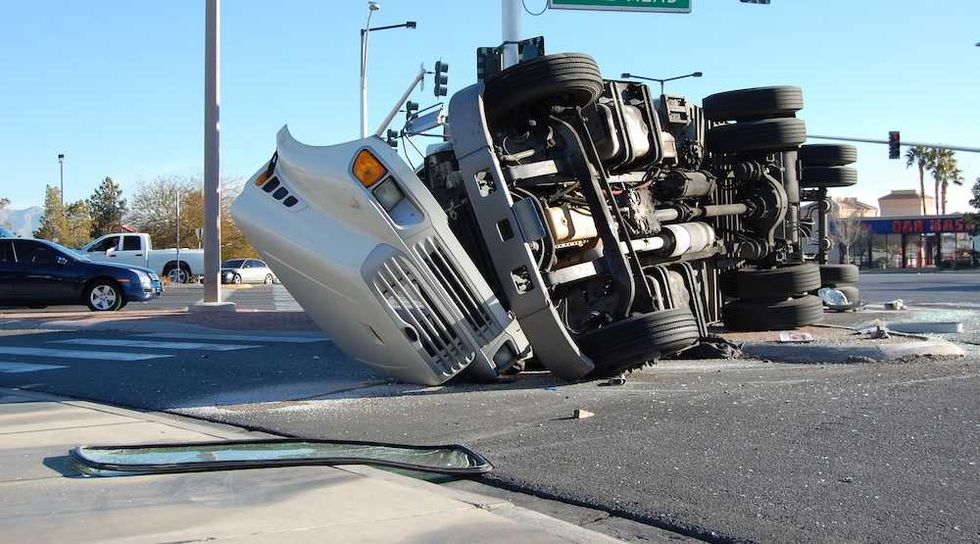Conservatives have long noticed a disturbing pattern: Hispanic illegal aliens appear again and again in drunk-driving cases. Recent news searches bring up multiple examples, some involving the deaths of children.
This summer’s tragedy in Wisconsin made the problem impossible to ignore — yet the corporate left-wing press tried to do just that. Two high school sweethearts, Hallie Helgeson and Brady Heiling, died when a drunk driver going the wrong way slammed into their car. Just weeks earlier they had gone to prom together.
Americans deserve more than platitudes and silence. They deserve honesty about the cultural, biological, and policy factors behind drunk driving.
The driver was Noelia Saray Martinez-Avila, a Honduran illegal alien who had racked up multiple drunk-driving charges. She lived in a sanctuary jurisdiction that shielded her from deportation. Only under the Trump administration’s renewed immigration enforcement did local authorities finally hand her over to ICE.
A cultural problem that fuels tragedy
The Wisconsin case was heartbreaking, but it was not unique. In 2007, the Raleigh News & Observer published a rare report on the problem. A Mexican man admitted he thought he “drove better after a few beers” and that drunk driving was normal in Mexico. At the time, alcohol-related crashes caused by Hispanic drivers in North Carolina were three times higher than for non-Hispanics.
The national data confirms the trend. Hispanic drunk-driving rates are roughly double those of whites. Alcohol-use disorder is three times as common. More than a third of Hispanic alcohol-dependent users relapse, compared with 23% of whites.
Binge-drinking drives much of the danger. Hispanics are more likely than whites to consume large amounts of alcohol in one sitting. Forty-two percent of Hispanic drinkers admit to three or more drinks per day, compared to 30% of whites.
The numbers don’t lie
Mexicans, who make up half of the illegal alien population, show the highest risk. Mexican-Americans are three times more likely than whites to develop alcohol-use disorder. FBI crime data reported last year shows that Hispanics, 19% of the U.S. population, account for 30% of drunk-driving arrests and 44% of public drunkenness arrests.
In California, where Hispanics made up 37% of the population at the time, they represented 44% of DUI charges in 2012 (the latest I could find). In North Carolina, Hispanics were just 8% of the population but accounted for 18% of 75,000 DUI arrests in 2007.
New Mexico illustrates the deadly stakes. With a population that is half Hispanic, the state suffers nearly three times the national alcohol-related death rate. Five people die every day from alcohol. Before reforms in the 2000s, New Mexico’s DUI crash rate stood 70% higher than the national average.
The pattern reflects Mexico itself. In the United States, drunk drivers cause 31% of traffic deaths. In Mexico, the figure is over 70%. About 24,000 Mexicans die annually in alcohol-linked crashes — more than twice the U.S. toll despite the population difference. Until recently, most Mexican states had no legal blood-alcohol limits, and licensing often required little more than paying a fee.
Native populations face even steeper risks. In McKinley County, New Mexico, where the population is 80% Native American, the alcohol-related death rate is three times higher than the state average and ten times the national average.
Research points to genetic factors. Enzymes that mediate alcohol’s effects vary by ethnic group. Indigenous populations, exposed to alcohol only in the last 300 years, show far higher vulnerability. With Mexicans being heavily Mestizo — roughly 20% indigenous and 60% mixed indigenous (Mestizo) — the biological risk compounds the cultural one.
The media silence
Given decades of national campaigns against drunk driving, one might expect attention to this ethnic dimension. Instead, the media downplay or ignore it. An America First lobbying group once tried to enlist Mothers Against Drunk Driving to raise awareness, but the effort went nowhere.
 c_sorvillo via iStock/Getty Images
c_sorvillo via iStock/Getty Images
Academics sometimes excuse the problem by claiming Hispanic immigrants drink out of depression or isolation. Yet the biggest consumers are Puerto Ricans, not Mexicans. Cuban-Americans drink the least. Mexican women report the lowest rates of all, meaning the averages are driven almost entirely by men.
And claims of “racial profiling” ring hollow. Most offenders are caught at night, their identities confirmed by arrest records, not stereotypes.
Why it matters
Democrats dismiss these realities for the same reason they ignore illegal aliens’ broader lawbreaking: victimhood politics. They portray Hispanics as downtrodden and conservatives as cruel.
But the grief of families like the Helgesons and Heilings is not a talking point. It is permanent loss. It is trauma that echoes for generations.
Americans deserve more than platitudes and silence. They deserve honesty about the cultural, biological, and policy factors behind drunk driving. They deserve leaders who will enforce immigration law, reject sanctuary loopholes, and tell the truth about the risks that put their families in danger.
The post The carnage no one talks about: Drunk driving and illegal aliens appeared first on TheBlaze.




